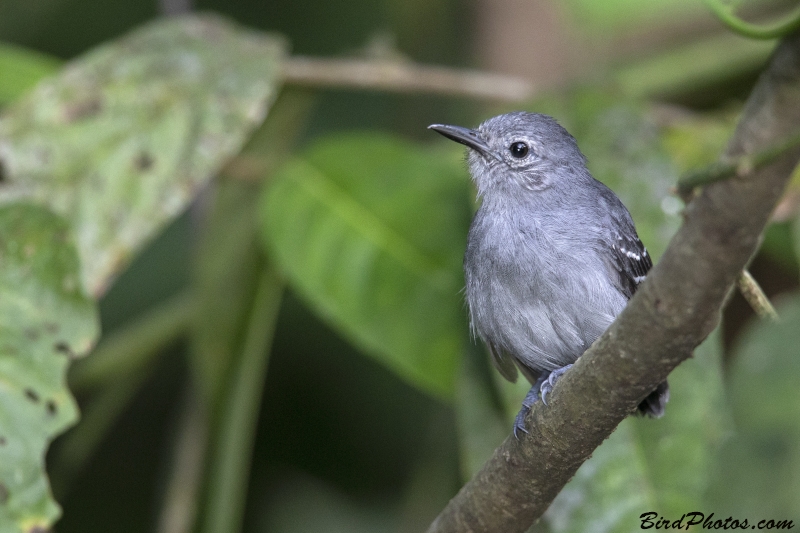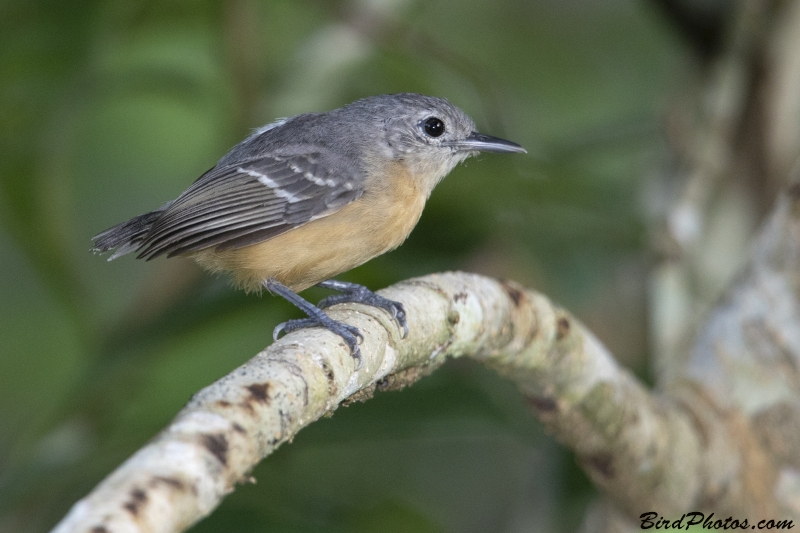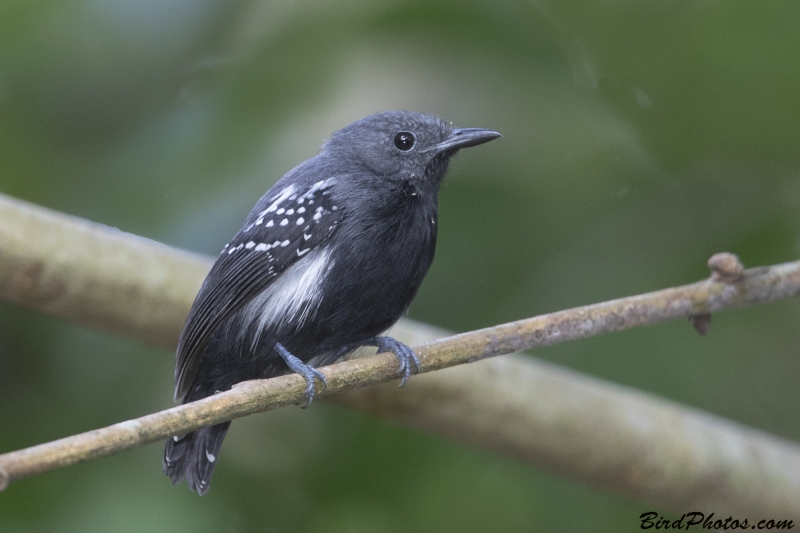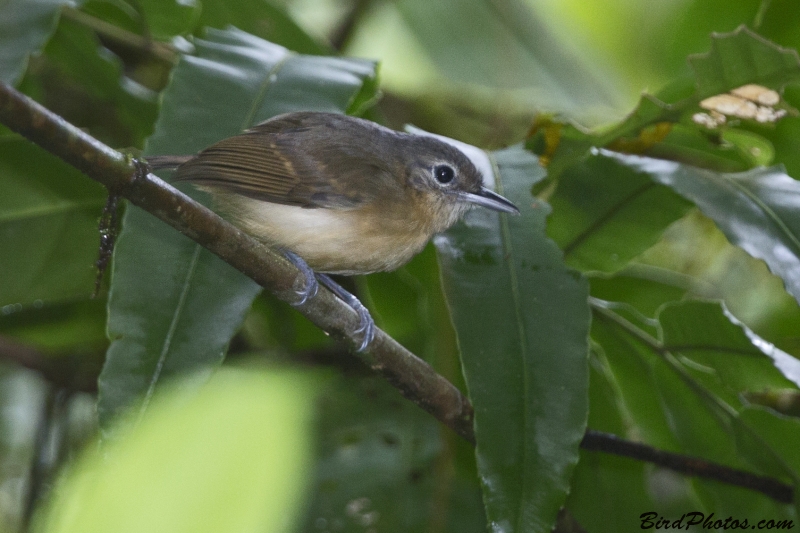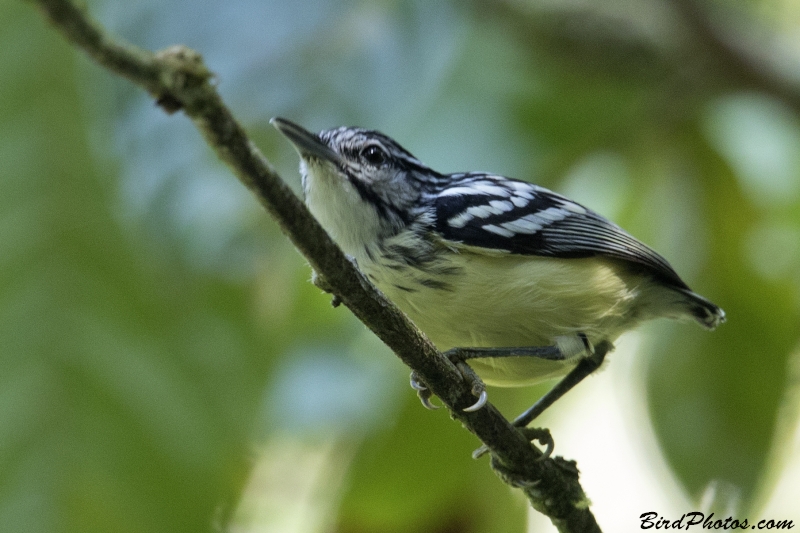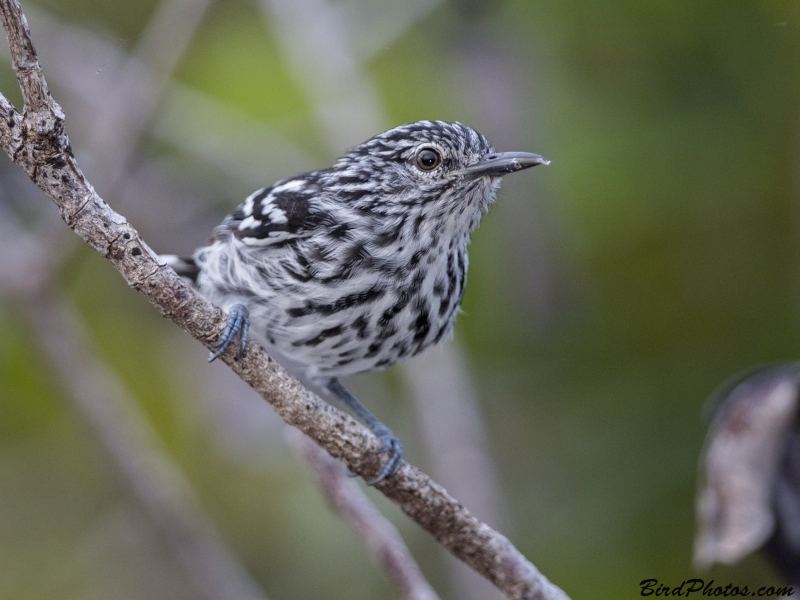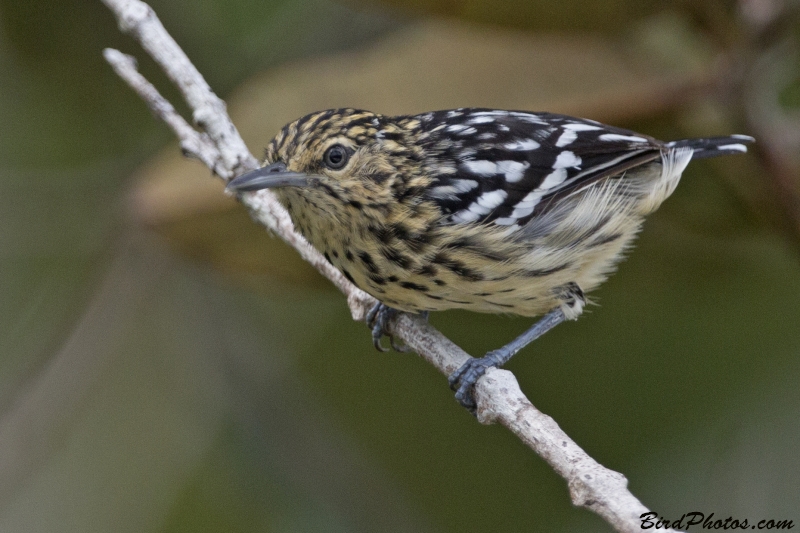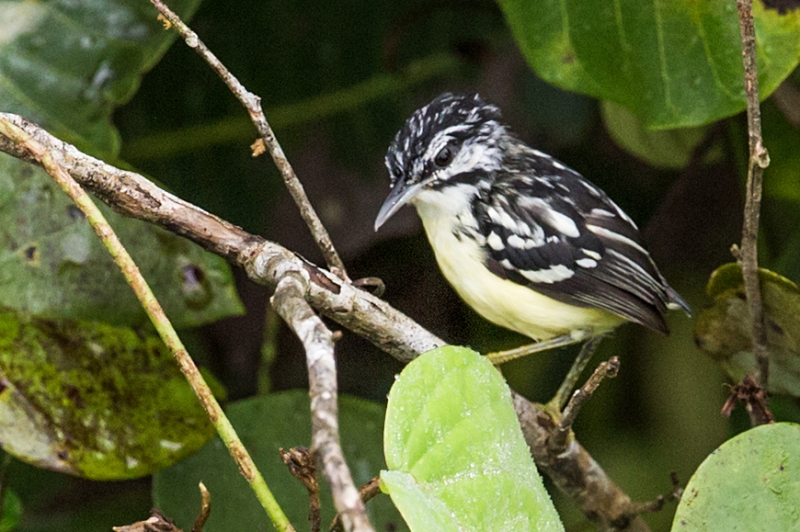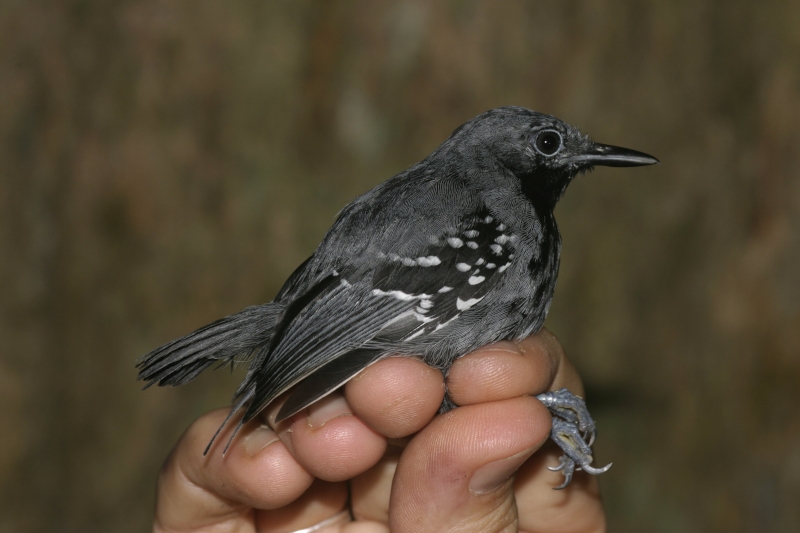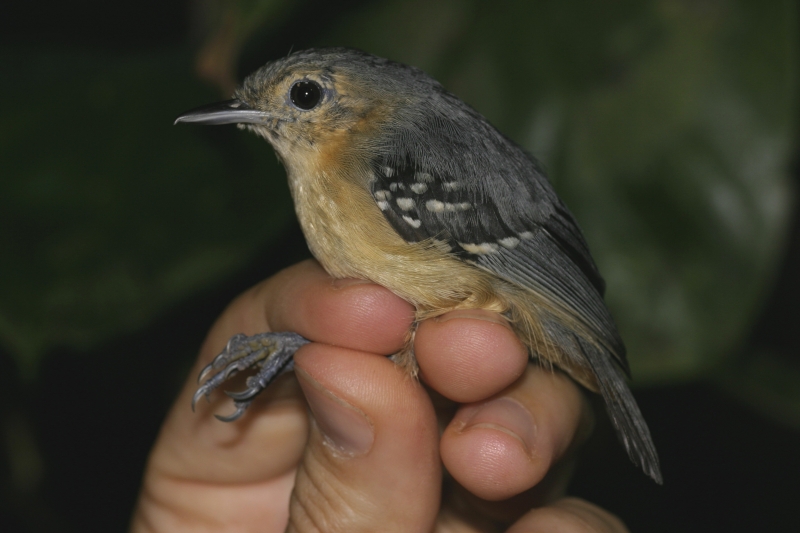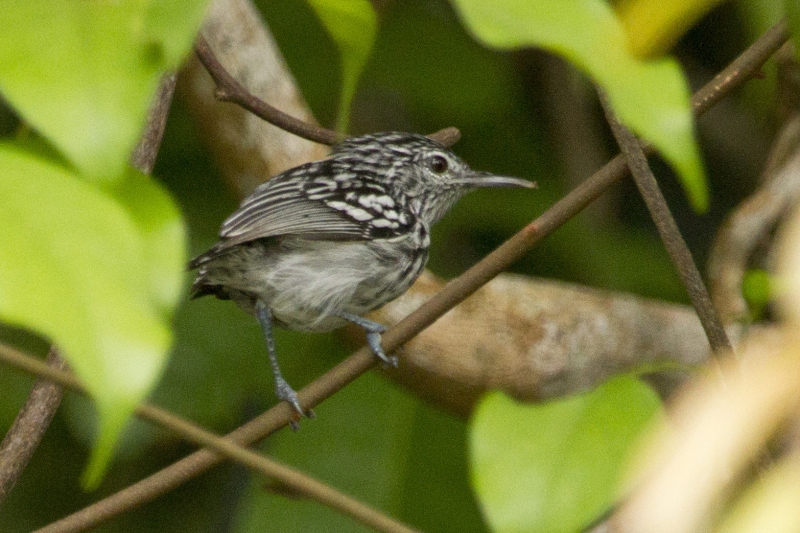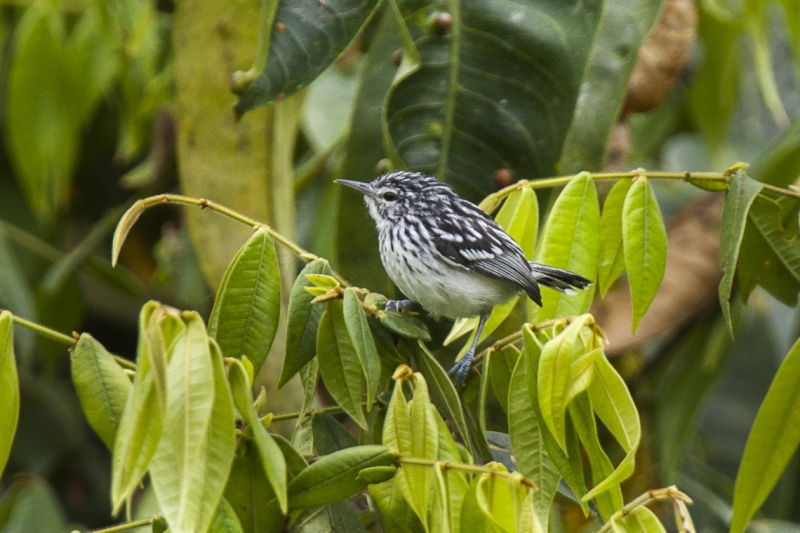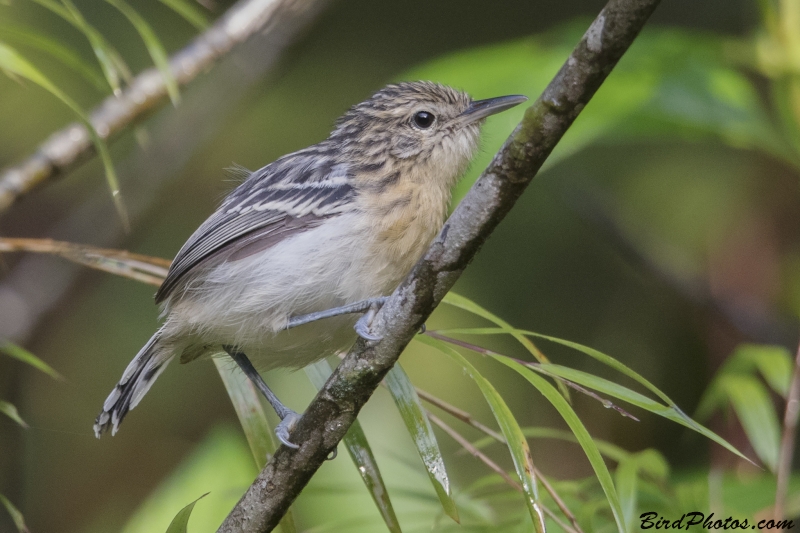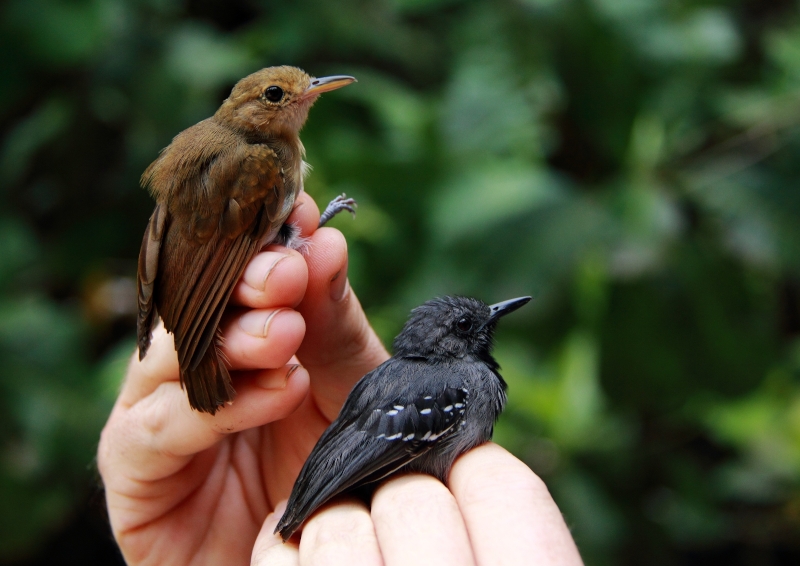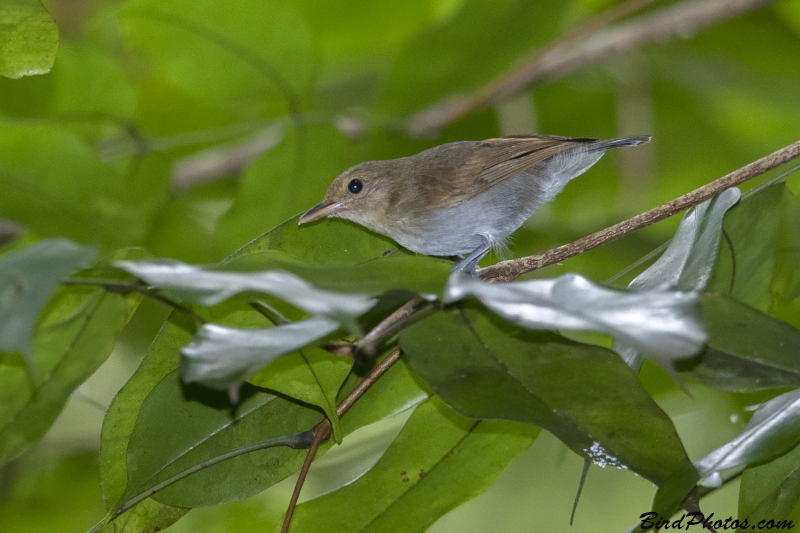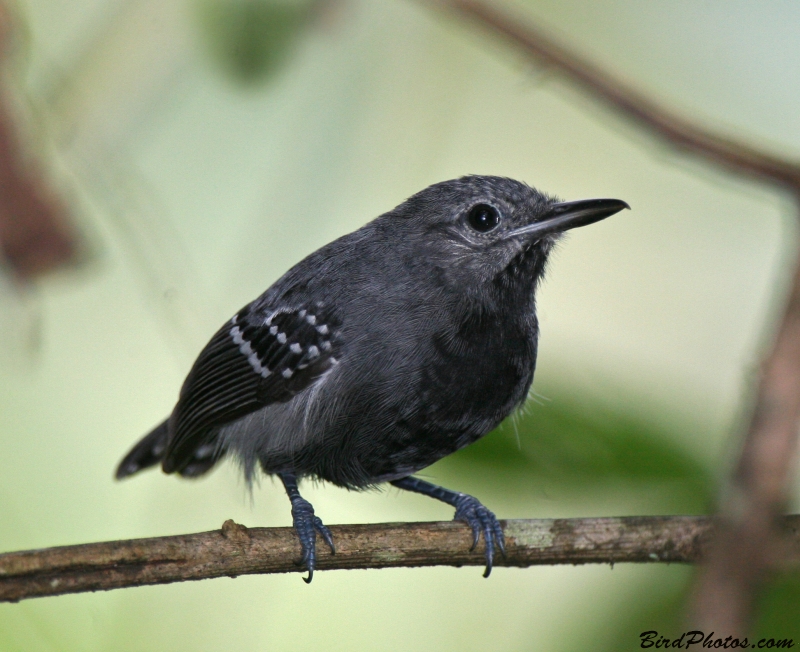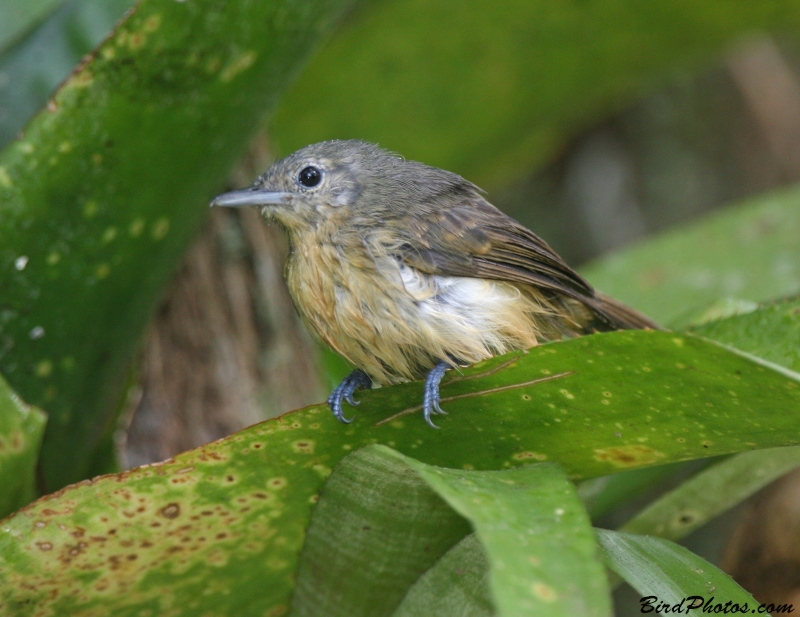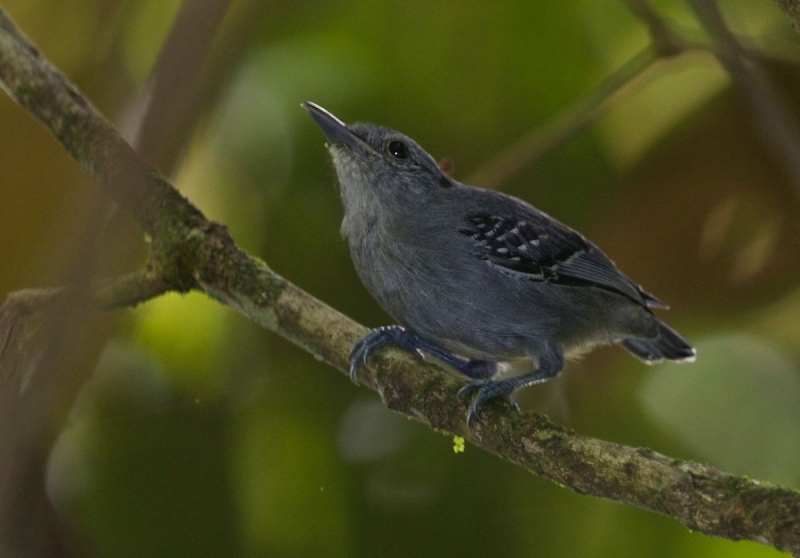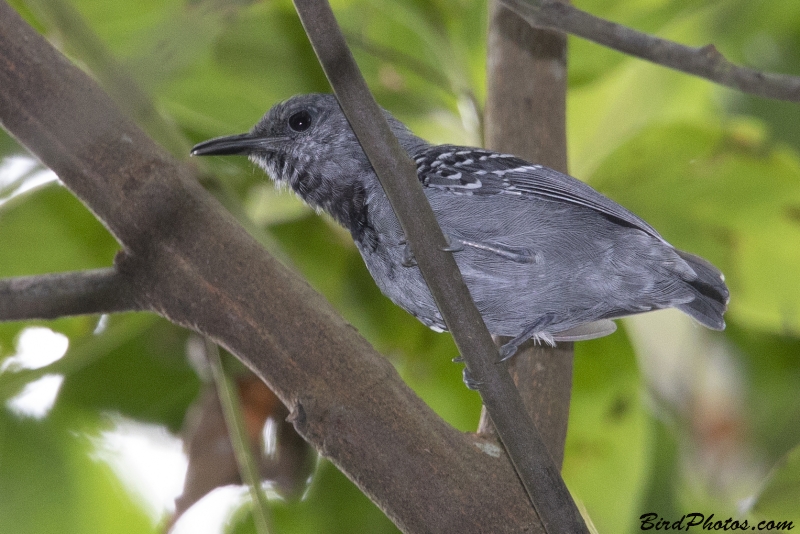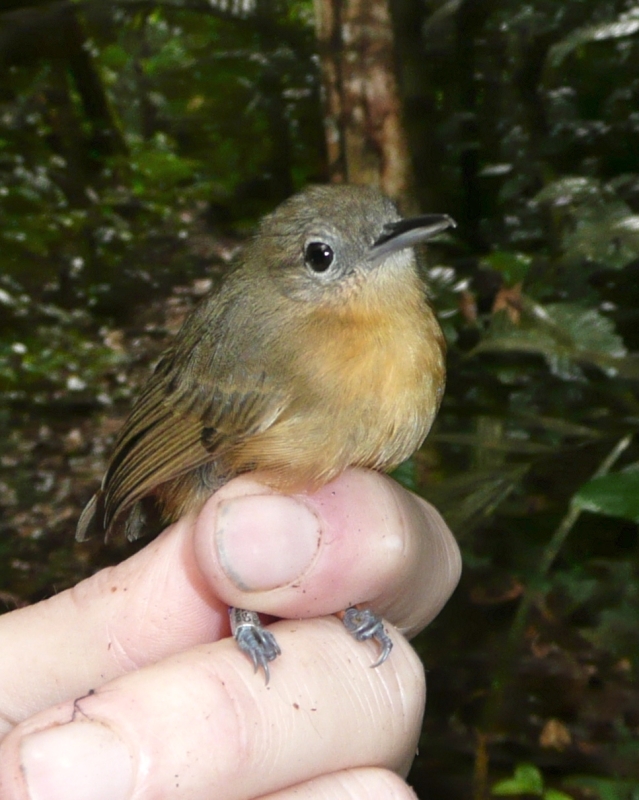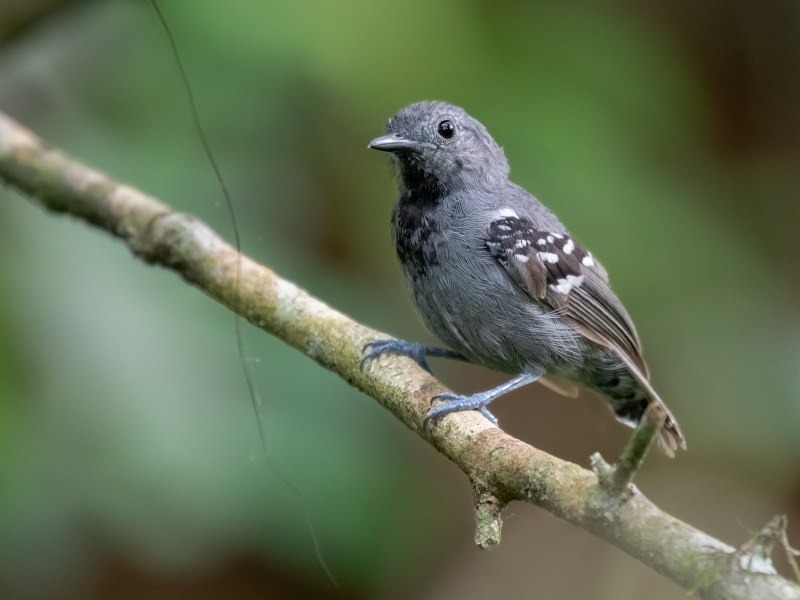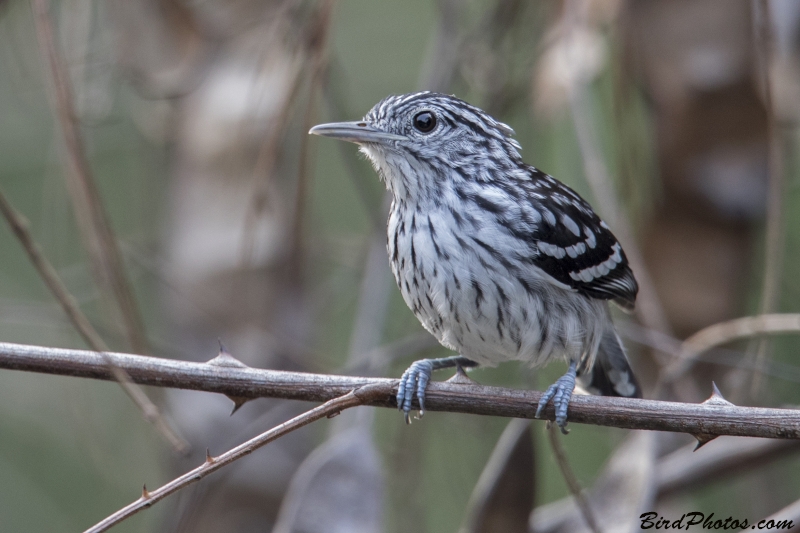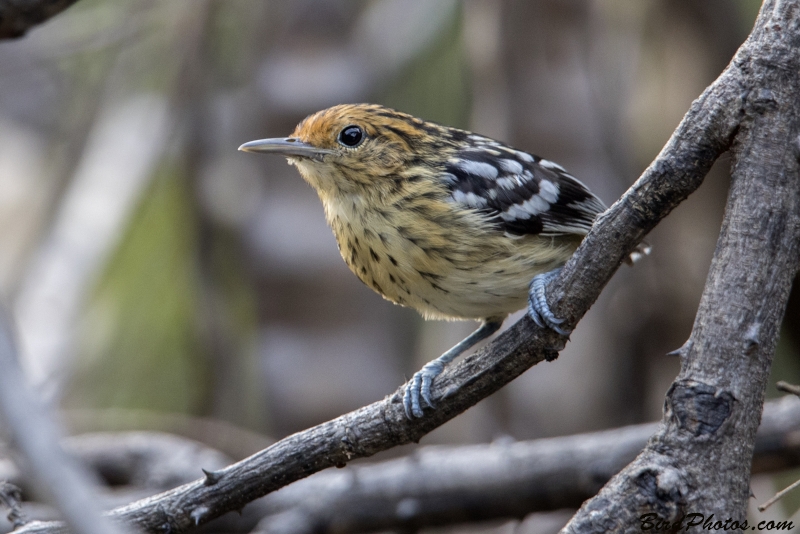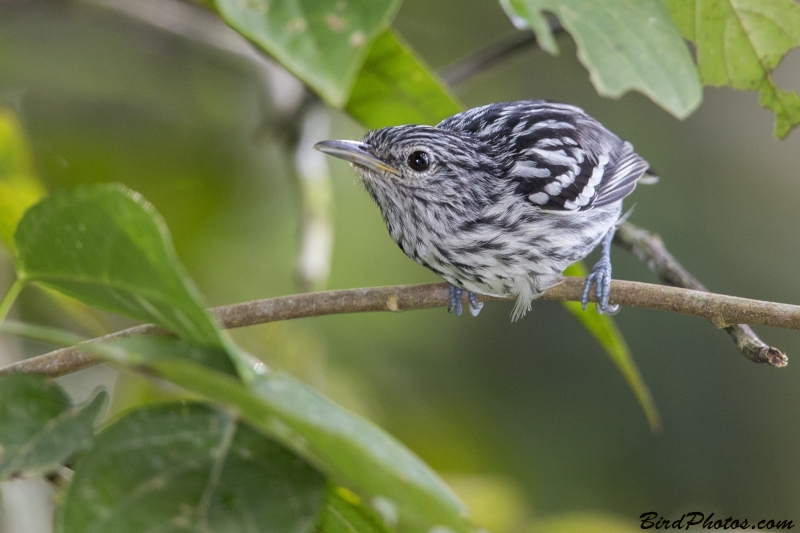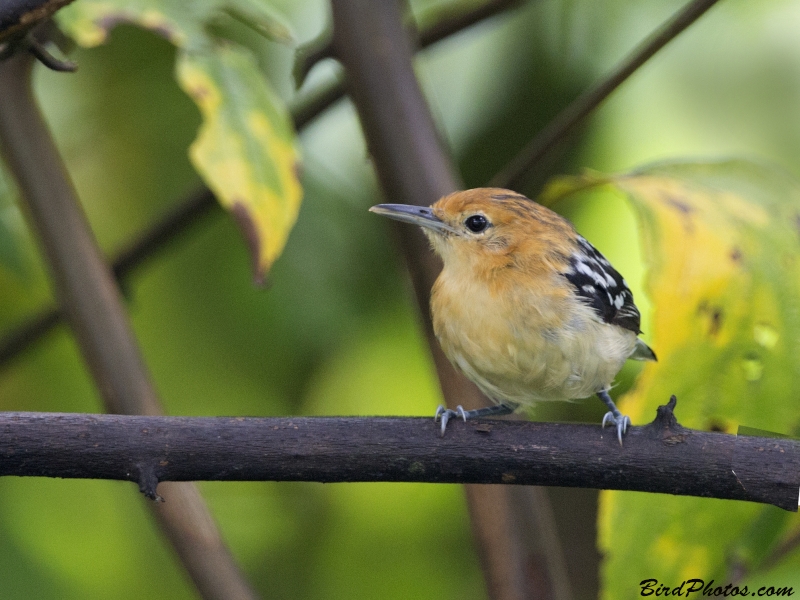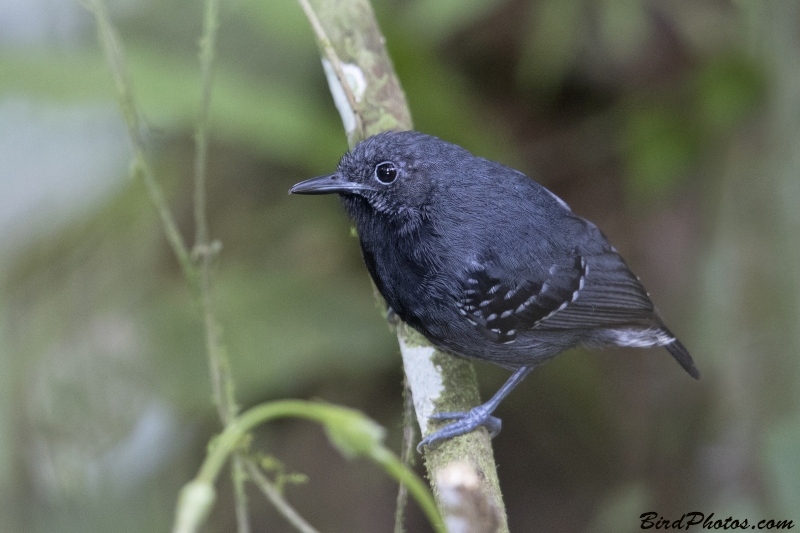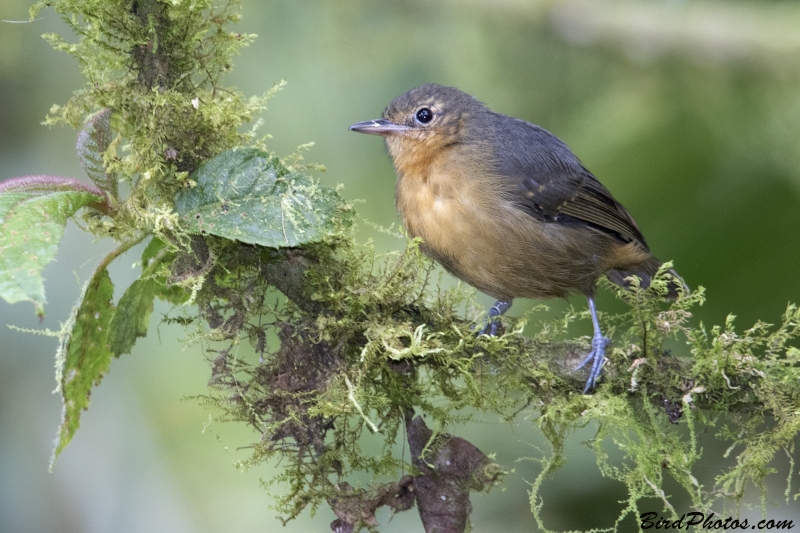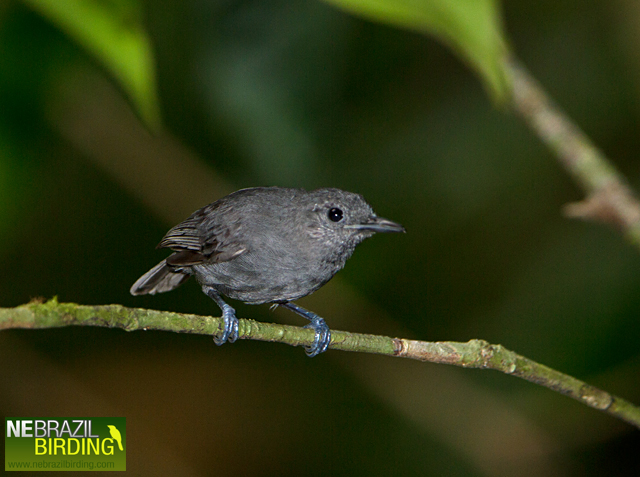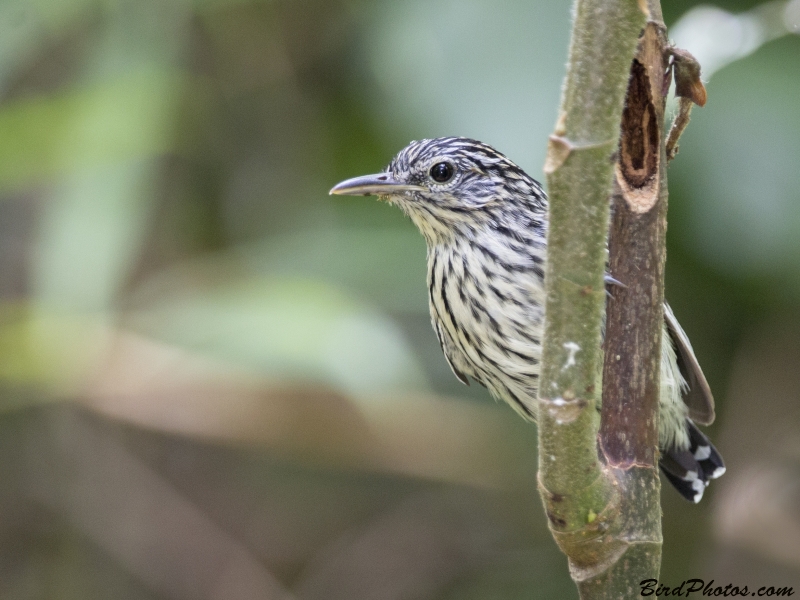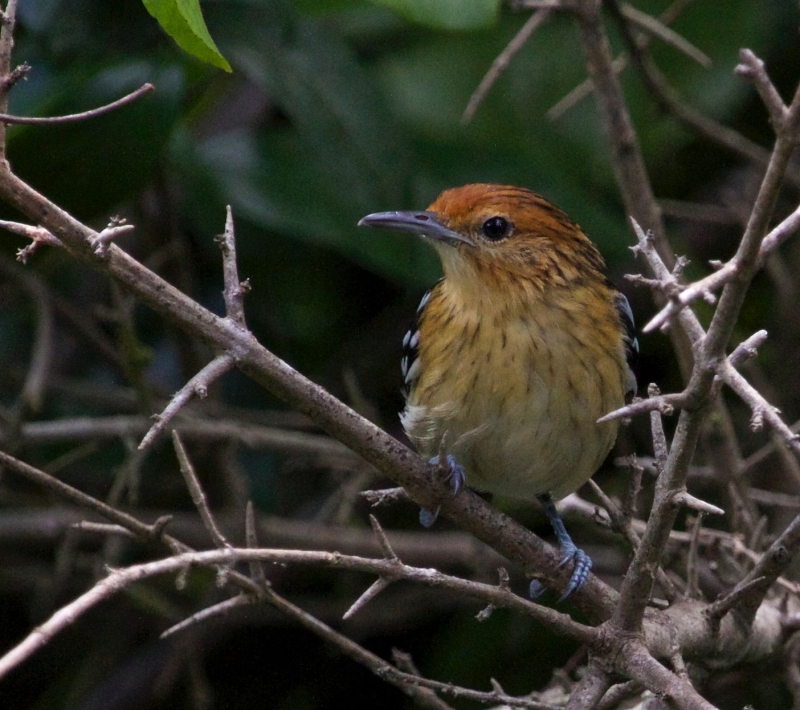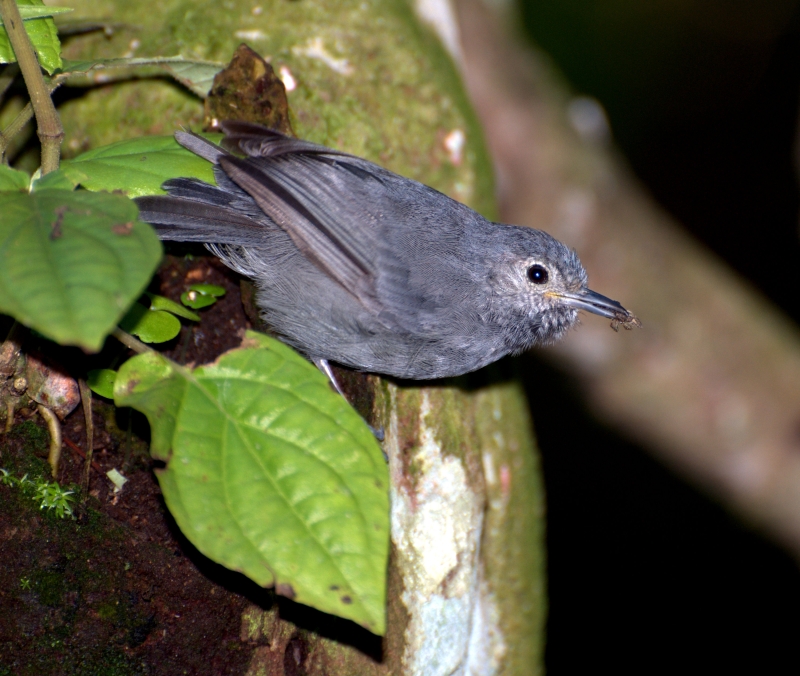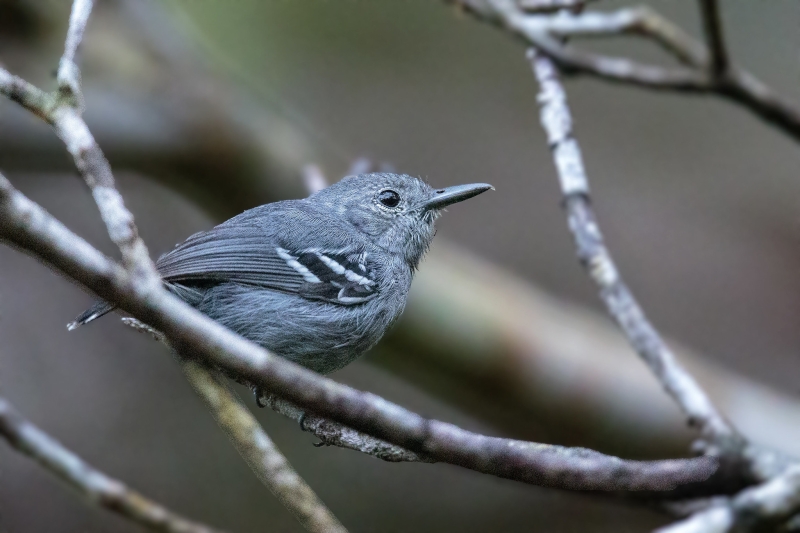A difficult canopy species with a distinctive sound. | ||||
Found only in varzea habitat, as seen on map. A male from the side. | ||||||||||||
Generally common. White flank often hidden. | ||||||||||||
Plain-winged means unspotted or without wing bars. Male is grey with a black chest and female is cream/rufous similar to White-flanked Antwren female. | ||||
Very similar to the Moustached Antwren but with a thinner malar stripe and roughly even black and white stripes on crown. | ||||||
Eating stick bug. | ||||||||||||
Not well known and only found in the area of the REGUA reserve. Believed by some to be a form of the Silvery-flanked Antwren. | ||||
| ||||
Very similar to the Pygmy Antwren but with a thicker malar stripe, and smaller (ProAves). The Moustached Antwren is also found in the Pacific coast lowlands, unlike the Pygmy Antwren. The male's crown is more black than white, and almost all black in the Amazon race. This male Amazonian subspecies has an almost completely black cap. | ||||||
| ||||||||||||
| ||||||
| ||||||||||||
| ||||||||||||
A lowland species seen in mixed understory forest flocks. | ||||||||||||
A typical antwren that can be found in healthy forest but also fragments of secondary forest. Male has pale throat except in southeast Peru, south Brazil and Bolivia where the throat is black. | ||||||||||||||||||
Compare to Unicolored Antwren and Silvery-flanked Antwren. Male has wing bars but no white flanks. Generally found a bit higher (500m.?). Female illustrated with sharp contrast in grey head and mantle to the body, and with wing bars by Birds of Brazil. It is very different in HBW, and most similar to Unicolored Antwren female. | ||||||
| ||||||||||||
Often found in secondary or degraded forest. | ||||||||||||
Found between 1000m and 2000m. Female may be unicolored or have a have grey back depending on subspecies. | ||||||||||||
Canopy species. Male and female similar, but female less yellow and more streaked in front. | ||||
| ||||||
| ||||
Male very similar to Amazonian Streaked Antwren, while female is darker. Species possibly overlap in east Colombia (Inirida). | ||||||||||||
A small lowland antwren, sometimes seen with the slightly larger Silvery-flanked Antwren. Note lack of wing bars and consistent head and back color. | ||||||
A lowland species. Note white tip to tail and wing coverts on both sexes. | ||||||


